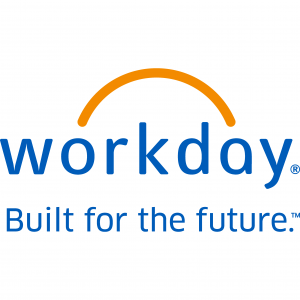Cloud implementation, integration and delivery are priorities for state and local Chief Information Officers (CIO) this year. Now that those deployments are being realized, governments are looking for more opportunities to reap the cost savings, flexibility and scalability of cloud environments.
In a recent GovLoop online training, panelists discussed the value and benefits of moving enterprise resource planning (ERP) to the cloud. Panelists included:
- Phil Bertolini CIO and Deputy County Executive, Oakland County
- Sherry Amos, Director of Market Development, Education & Government, Workday.
Migrating to the Cloud: What to Expect
Agencies are considering migrating important human resources and financing operations to the cloud. Given that these operations are mission critical, there are a few things organizations should keep in mind before making the big move.
- Benefitting from the cloud
Implementing cloud systems can have heavy upfront costs, which means organizations have to dig deeper to prove that the cloud will provide savings long-term, especially if they decide to keep their on-premise systems. “In the first couple years, you do not see the win,” Bertolini explained. “Organizations have to perform cost analysis a few years deep to see the line of cost.” While that may not be particularly encouraging, Bertolini said that the benefits are insurmountable and well worth the cost.
- Discussing the cloud.
Internal pushback against cloud migration often occurs in response to a lack of knowledge of the systems. Before implementing new technology, CIOs and project managers have to make sure that they are ready to initiate agency-wide conversation and answer questions about the cloud. For instance, “Employees are afraid that if an organization outsources to cloud they will lose their jobs, but in reality their jobs would get harder,” Bertolini explained. “Agencies need to make sure they’re explaining these issues to [employees] so they aren’t seeking outside information that requires clarification.”
- It’s all about people
“Challenges with people can come from the inside and the outside,” Bertolini explained. That means agencies will face resistance from employees and stakeholders alike. “Internally, you have people pushing back and, externally people wonder where their data will reside.” CIOs need to expect that, in all stages of implementation, people will be operating on their assumptions and worries about the cloud, but these worries can’t be overlooked. “You can’t go forward if the people that make decisions aren’t with you,” Bertolini insisted. “People know the technology exists, their question is ‘Can I use it and make it work for me?’”
Even with these considerations in mind, the cloud adoption process can be daunting. But, Bertolini insisted that there are numerous resources available to help organizations make their migrations as seamless as possible. “There’s no reason to reinvent the wheel. If the model exists, see what you can do with it,” he said.
Getting Started: The Power of One
Workday provides a cloud ERP alternative for human resources and financial management for over 2200 customers. Amos said that when assisting organizations with cloud migration, public sector customers are worried about budgetary pressure, demands for transparency of utilization of resources and the changing workforce.
But, Amos noticed another challenge when assisting the public sector with migration. “Most organizations plan operations, execute them and then analyze.” Amos refers to this strategy as disconnected planning, which can increase risk and result in unreliable data and rigid functions. Workday developed a solution to ensure that these operations roll together. “When we develop those three business functions, they are in one model.” Workday refers to this solution as “the power of one”. “There’s only one code line, one security model for all functions and one source for real-time data.”
Realizing the Value of the Cloud
As Bertolini said, some organizations fail to see the value of cloud migration upfront. However, organizations that use Workday’s cloud system reported numerous benefits to migration.
- After moving enterprise operations to the cloud, agency employees were free to work mission critical projects instead of dedicating time to menial processes. Workday customers experienced a 116 percent time increase in time spent on analysis and a 57 percent decrease in time spent on data gathering.
- As Bertolini said, “it’s all about the people” especially with recent changes in the government workforce. With the cloud, organizations experienced a 90 percent decrease in on-boarding time and a 75 percent increase in succession planning.
- For agencies that are worried about cost savings, the numbers say it all. Workday cloud users saw a 76 percent decrease in the cost to process expenses.
Amos uses these numbers to prove to organizations that they don’t have to feel like they’re taking a huge risk when migrating to the cloud. “A few years ago nobody wanted to be first to move ERP to the cloud. We’re here today because so many other organizations have done it successfully,” she said.
Overall, Bertolini advises that agencies remember that “success comes with challenges,” and the benefits of cloud success well outweigh the obstacles that precede them.






Leave a Reply
You must be logged in to post a comment.